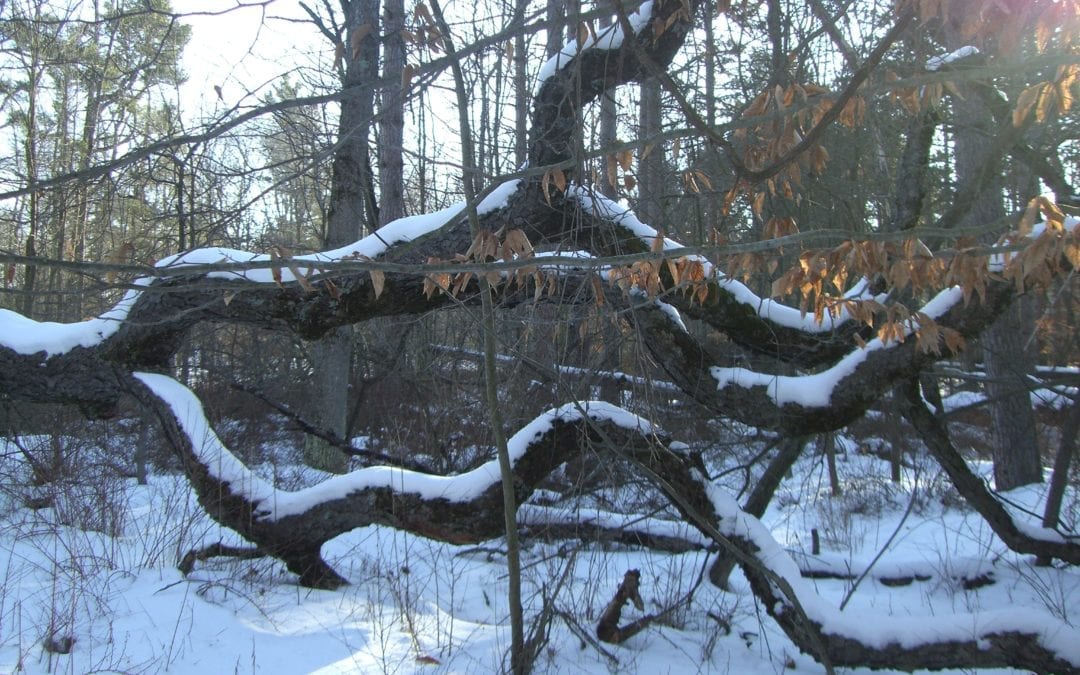I’ve been in the garden center biz for a long time and have always said that I’ve never met a group of people more obsessed with the weather than gardeners. I don’t like to generalize but we are constantly fretting over the weather. It’s way too cold. Or way too hot. We worry when it rains. And we are concerned when it’s dry.
We seem to be caught in a snow cycle. As I write this, I remember driving home from the airport during Sunday morning’s Austrian snowglobe snowfall. The snow fell gently and steadily, slowly obliterating the lines between hard and soft surfaces. The magic of it outweighed the stress of the drive. And who knows what tonight’s storm will bring. It started in Vegas, so there is spectacular potential.
Of course, I personally despise shoveling walks and driveways, but still love the winters when the snow falls early and deep, and then stays all season. My plants are sleeping quite soundly under that white blanket, stems dormant, and roots slowly developing in that not quite frozen soil.
Tender perennials, in particular, need some protection from the winter weather. When really cold temperatures occur, a foot or more of the fluffy white stuff will prevent the surface soil from dipping into the sub-freezing range, even though the air temperature may be very, very cold. Snow also keeps those perennials and newly planted trees and shrubs firmly anchored in the ground. Insulated soil stays reliably cool or cold while exposed soil, in contrast, experiences wider swings in temperatures. This periodic freezing and thawing heaves poorly rooted plants up and out of the ground.
Additionally, the snow will prevent frigid winds from dehydrating the surface of any exposed vegetation. This kind of winter plant damage is quickly observed when we experience those nasty Polar Vortexes, while the parts of plants protected by the snow survive. This is particularly noticeable on evergreen plants like iris, coralbells, boxwood, and rhododendron. But when dormant and nestled beneath a few inches or more of snow, these plants are kept quiet and moist.
How does snow accomplish these miracles? The shape of a snowflake is what protects our plants from the cold. There are small, air-filled spaces in each one. While singly insignificant, as they pile up, temperature conductivity is slowed, reducing the effect of really cold temps. Snow can also act as a fertilizer. As snow falls through the atmosphere, nitrogen and sulfur attach to the flakes. The inevitable spring melt releases these essential elements into the soil.
Snow does cause some mischief. It can certainly exacerbate animal pest problems. With less to nibble at ground level, deer will turn their attention to fat buds on crabapple trees and tender foliage on arborvitae. Mice are free to scoot about in a snowy kingdom, protected from the searching, hungry eyes of hawks and foxes. Rabbits will gnaw at young bark and twigs, mowing a young burning bush or shrub rose to snow level overnight.
Snowfall can create another problem with evergreens. More than a couple of inches of heavy wet snow will weigh down the flexible branches of yews and arborvitae, often splitting upright varieties. Try to get out with a broom and knock the snow from these plants with gentle, upward strokes.
The issue is a bit different from broadleaved evergreens. These plants have a hard enough time drawing water from frozen soil. That trouble is compounded when sunlight reflected off snow sucks even more moisture from respirating foliage. The best way to avoid this problem is to not site them where a broad southern expanse can bounce sunlight on them. And be sure to check your mulch levels before the ground freezes, adding an inch or two if the soil is exposed.
In the end, I find the snow quite beautiful. Winter reduces our midwestern landscapes to bare bones. A blanket of snow throws those bones into high contrast. Line dominates mass. Pattern overrules color. Subtlety is the new watchword. Not a bad lesson to ponder as we get ready for spring.

